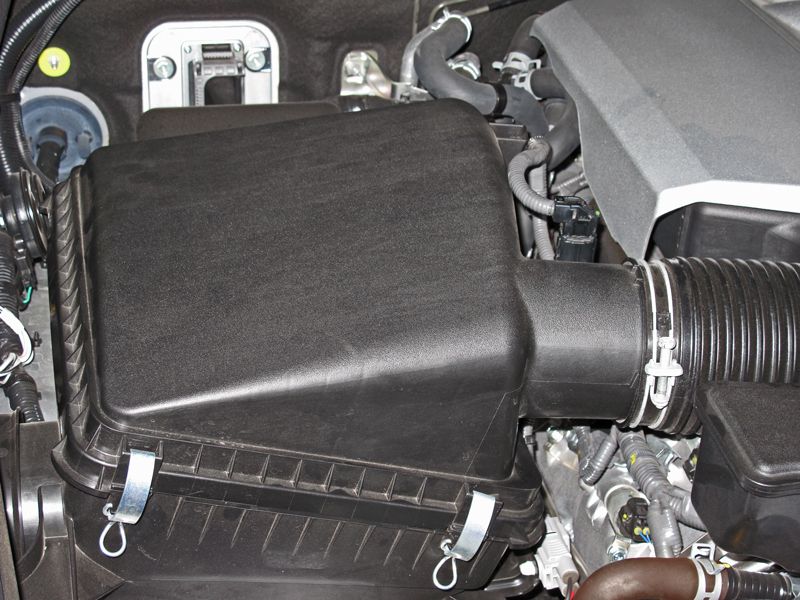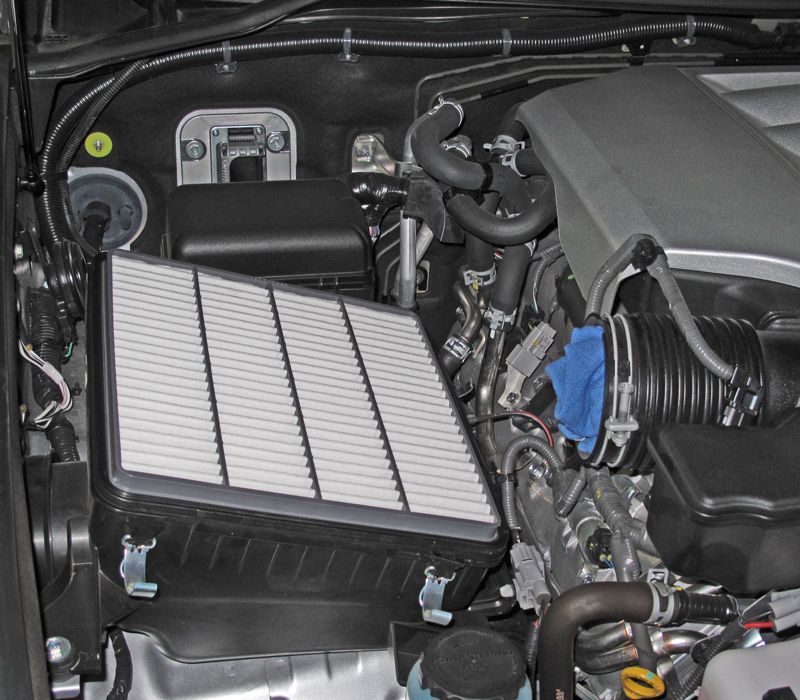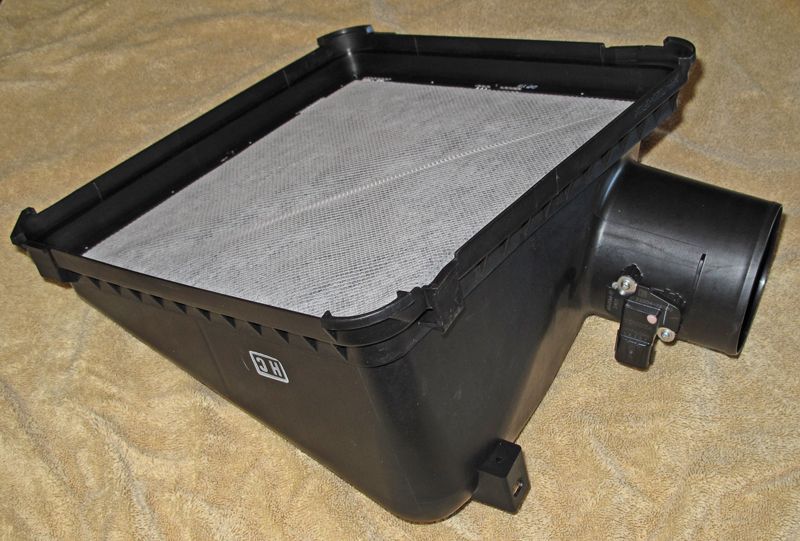So today I pulled the air filter to get a peek or change, figuring I'll change it today because it's been a good while, wanted to see, knowing miles and times of very dusty conditions, and I'll be changing the oil in a week. So I'll have about 500 miles on it, then oil change comes. If okay, I'd leave it.
So I get the filter out, looks pretty grungy, then wanted to see a little downstream after the filter. I loosen the snorkel clamp and hoses so I can remove the top cover to see how clean/dirty things look. Then I found built into the top housing another air filter, smaller than the main primary filter. It looks like the only way to replace it if it ever comes to that is to buy/replace the top filter box housing - because I can't see an obvious way to remove only the filter media.
I don't recall seeing anything in the owners manual about 2 air filters in the engine compartment. Had I not got curious, I would have never known there was another filter up under the air filter box top cover.
Oh, and I'll soon have an air filter indicator on it's way soon. But two filters?
add - 2010 Hyundai Tucson 2.4L
So I get the filter out, looks pretty grungy, then wanted to see a little downstream after the filter. I loosen the snorkel clamp and hoses so I can remove the top cover to see how clean/dirty things look. Then I found built into the top housing another air filter, smaller than the main primary filter. It looks like the only way to replace it if it ever comes to that is to buy/replace the top filter box housing - because I can't see an obvious way to remove only the filter media.
I don't recall seeing anything in the owners manual about 2 air filters in the engine compartment. Had I not got curious, I would have never known there was another filter up under the air filter box top cover.
Oh, and I'll soon have an air filter indicator on it's way soon. But two filters?
add - 2010 Hyundai Tucson 2.4L
Last edited:




